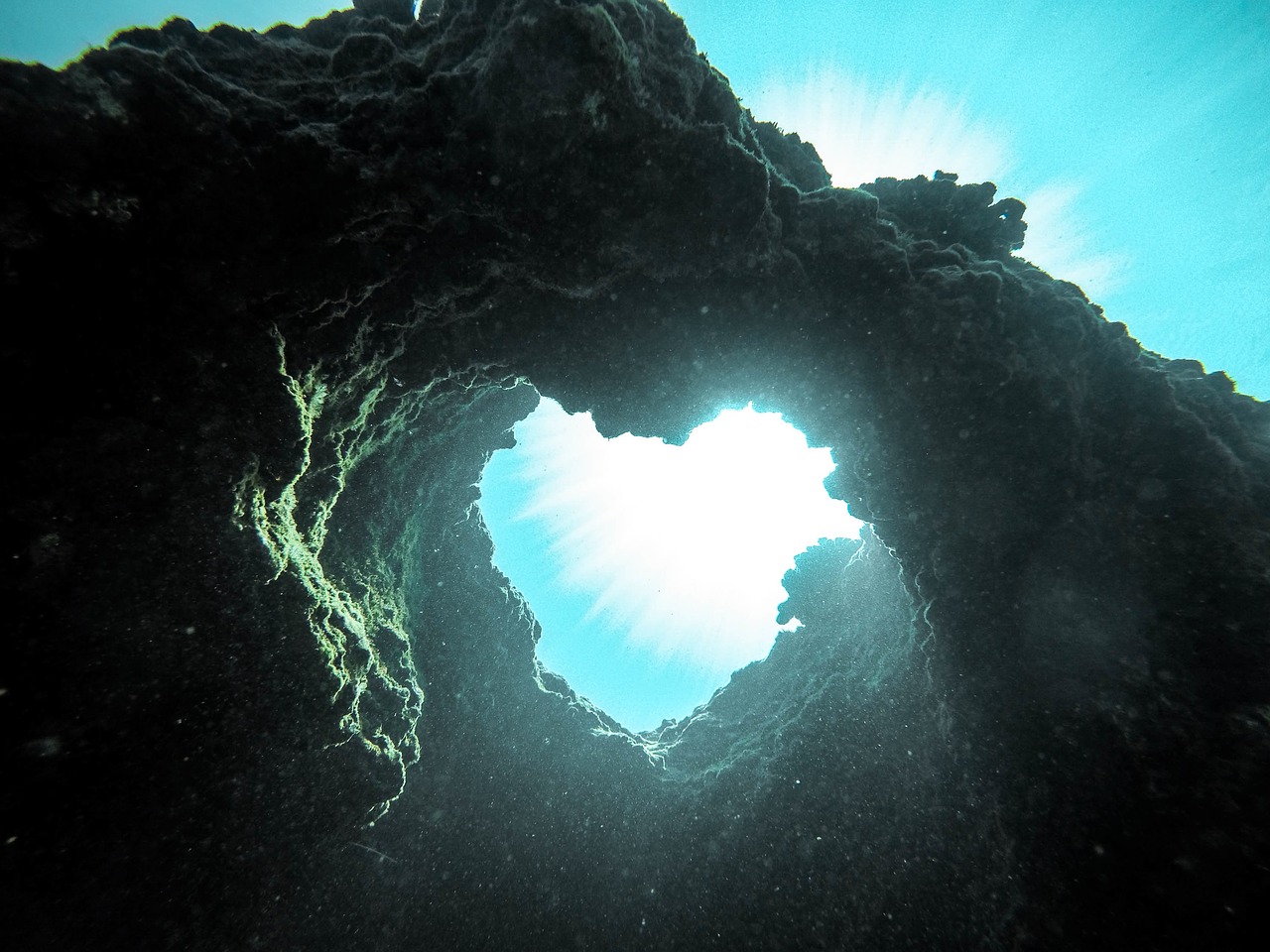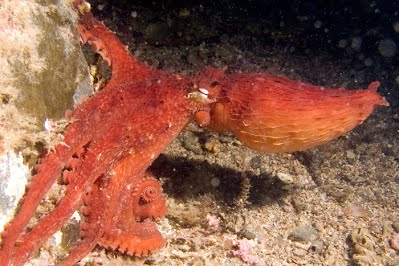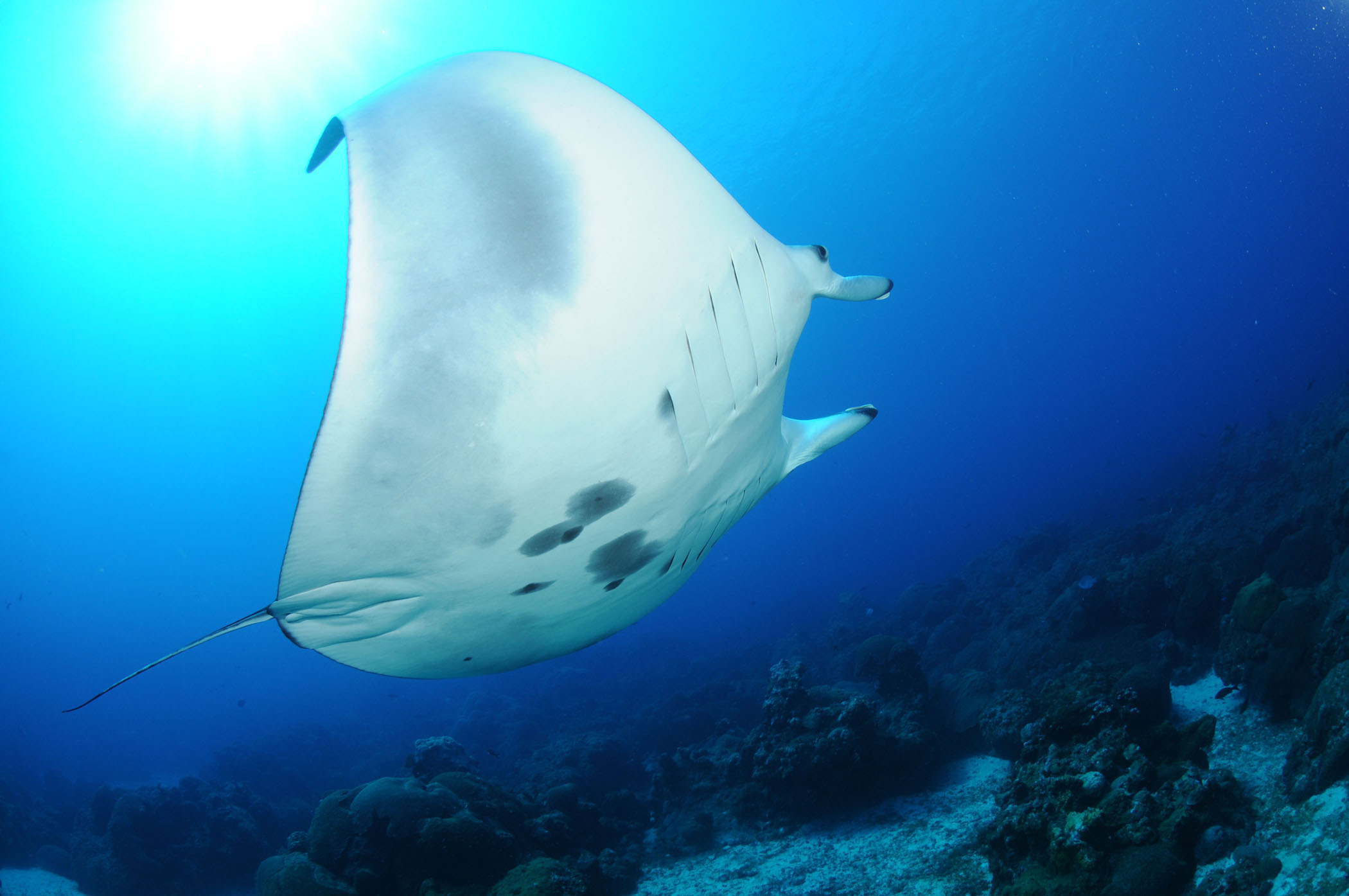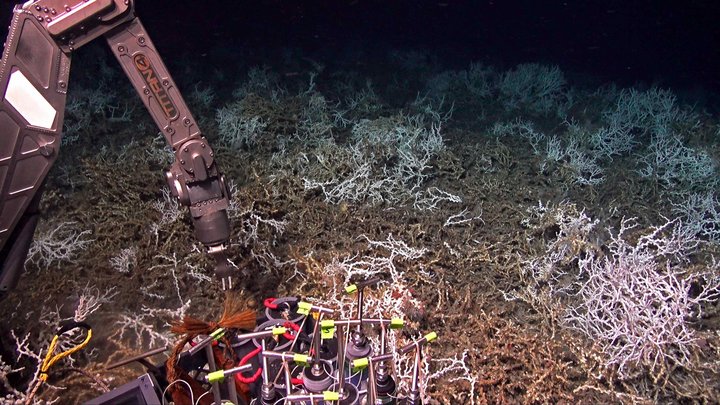5 Awe-Inspiring Ocean Discoveries of 2018
These five stories of underwater findings show that 2018 was truly a remarkable year for marine research and exploration

2018 has been a year for the books when it comes to ocean discoveries. With the vast majority of the world’s marine ecosystems still yet to be seen by human eyes, there is so much more we have yet to uncover throughout our great ocean. Check out five big discoveries that happened over the past year.
There’s a New Octopus in Town—with Plenty of Frills

Early in the year, scientists discovered a new species of Pacific octopus in the waters of Prince William Sound, Alaska: the frilled giant Pacific octopus. While a dual species ‘theory’ was suspected for a number of years when it came to the giant Pacific octopus, researchers recently scientifically confirmed the reality of the two unique species. What makes this new frilled species different is the unique ‘frill’ that runs the length of its body and two distinctive white marks on its head (the giant Pacific octopus only has one).
The Only Thing Cooler Than a Baby Manta Ray?
Lots of Baby Manta Rays

In June, a research team published its findings of the world’s first known manta ray nursery house in the Flower Garden Banks National Marine Sanctuary off the coast of Texas. A scientist from the Scripps Institution of Oceanography in San Diego was conducting research in this marine sanctuary, and happened upon multiple juvenile mantas (Mobula birostris) during his work. Since the spotting of baby mantas is actually incredibly rare, it was clear that more research had to be done. What they found was that about 95 percent of the mantas visiting this specific sanctuary were juveniles! This discovery clearly illustrated how years of diligent research can lead to brand new discoveries on any given day.
Scientists Found the Cutest Shark Ever, and the Story of its Name is Beyond Inspiring

Not long after that, a new species of shark in the Gulf of Mexico and western Atlantic Ocean—Genie’s dogfish—was named after a true pioneer in shark biology, Eugenie Clark. Dr. Clark studied sharks most of her life and was founder of Florida’s Mote Marine Laboratory, where she was a strong advocate in educating people about the wonder of sharks. Her key message was that sharks should inspire awe in us, not fear. Genie’s Dogfish is a deep-sea shark with enormous green-blue eyes, and is a cousin to the Japanese species Squalus mitsukurii.
A Deep-Sea Secret Garden has Been Hiding Just Off the Coast of South Carolina this Whole Time

As if that wasn’t enough, scientists were stunned and delighted to find a ‘secret garden’ hidden deep in the Atlantic: an 85-mile long deep-sea coral reef nestled 160 miles off the coast of South Carolina. In late summer, a research vessel 160 miles off the coast of South Carolina dove a half-mile down to the seafloor, and what they found was a coral reef estimated to be 85 miles long. The biggest kicker—no one ever knew this reef existed before the expedition! This remarkable finding provides an undoubtable testament to the wonder of our ocean and the critical importance that in order to protect it, we must first understand it.
Speaking of Gardens, There’s an Actual Octopus’ Garden,
and Scientists Found It

Researchers aboard one of NOAA’s deep sea exploration vessels, the E/V Nautilus, set out to explore the Davidson seamount, a 7,000-foot tall mountain that rises from the seafloor about 80 miles off the coast of central California. Its highest peak is 4,000 feet below surface, so this vessel’s ROV delved to upwards of 12,000 feet. While they were nearing the end of the 30-plus hour dive, they found dozens of octopuses tucked into bowling ball-sized holes in the rocky terrain, including some brooding females with their eggs! Thousands of octopuses were ultimately spotted exhibiting the same behavior, a sight the likes of which had never been seen before. While research remains to be done to understand this “octopus party,” the observation was truly an unbelievable spectacle of a deep sea wildlife community.
All in all, these discoveries collectively prove the importance of a renewed commitment to exploring, researching and learning about the wonders our vast ocean holds. From the discovery of brand new species that we never knew existed to seeing ecosystems for the very first time, the key to providing our ocean with a healthy and thriving future is an openness to learning and garnering more knowledge.
Interested in staying tuned in to more ocean discoveries? Follow along with the National Oceanic and Atmospheric Administration (NOAA)’s Office of Ocean Exploration and Research to get the latest on current missions, and check expedition updates. Help cheer on the scientists pushing us toward even more discoveries in 2019!